Friday 7 May 2021 was an historic date, because on this day the first work of art found its place in the Reinhard Ernst Museum. We have documented the event in photos and respond to questions that have reached us about it.
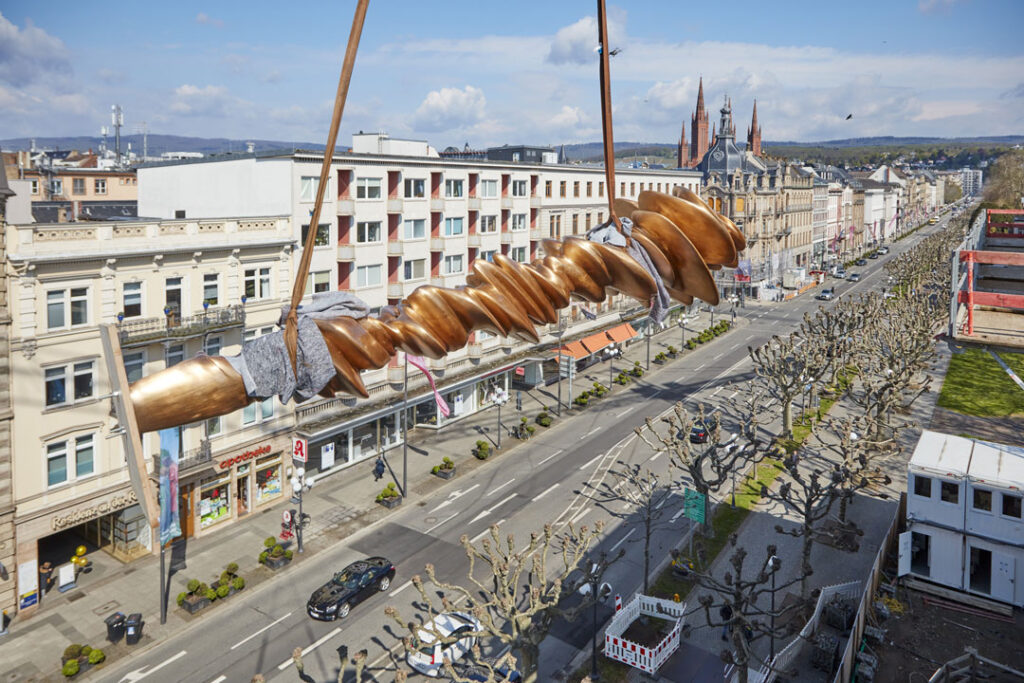
What is the work of art in question?
The two-part work is titled Pair and was created by the 72-year-old artist Tony Cragg. The two parts are 6.5 and 6.2 metres high and are made of polished bronze. In the base area, the hollow bodies have walls that are approx. 12 millimetres thick and they are about half as thick in the upper section. The date given for the abstract work is 2019 because the design for it was created in that year.
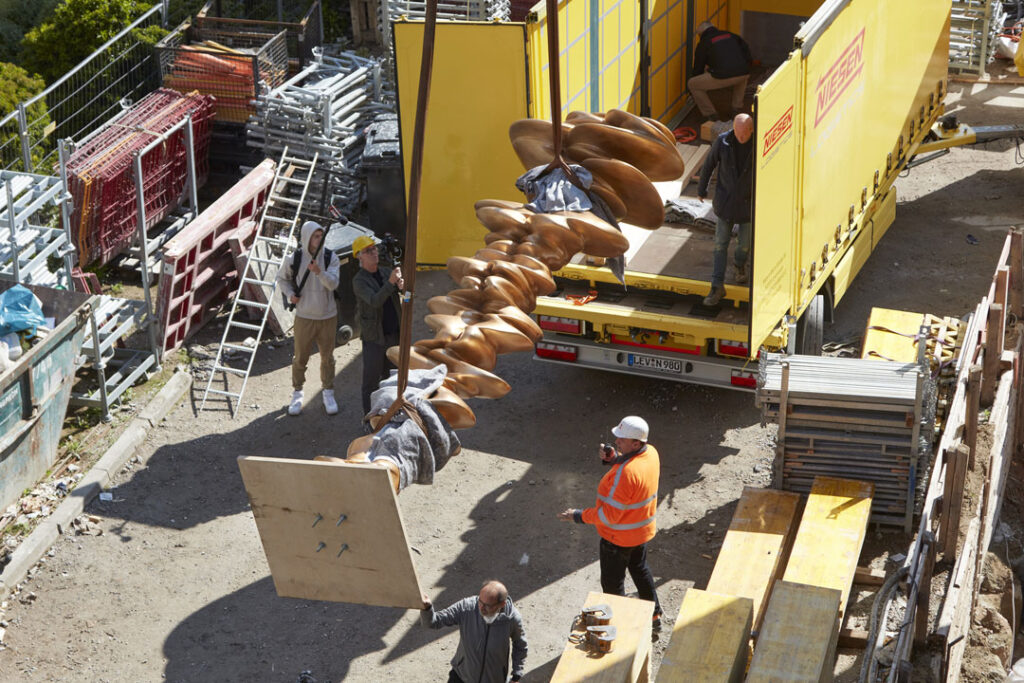
Why was the work put in place now – long before the museum building is completed?
Pair is so large and so heavy that it was only at this point in time that the work of art could be lifted from the lorry over the museum with the available crane and moved into the building through the unglazed openings in the shell. During further construction work it will be scaffolded here and protected from damage until the museum opens.
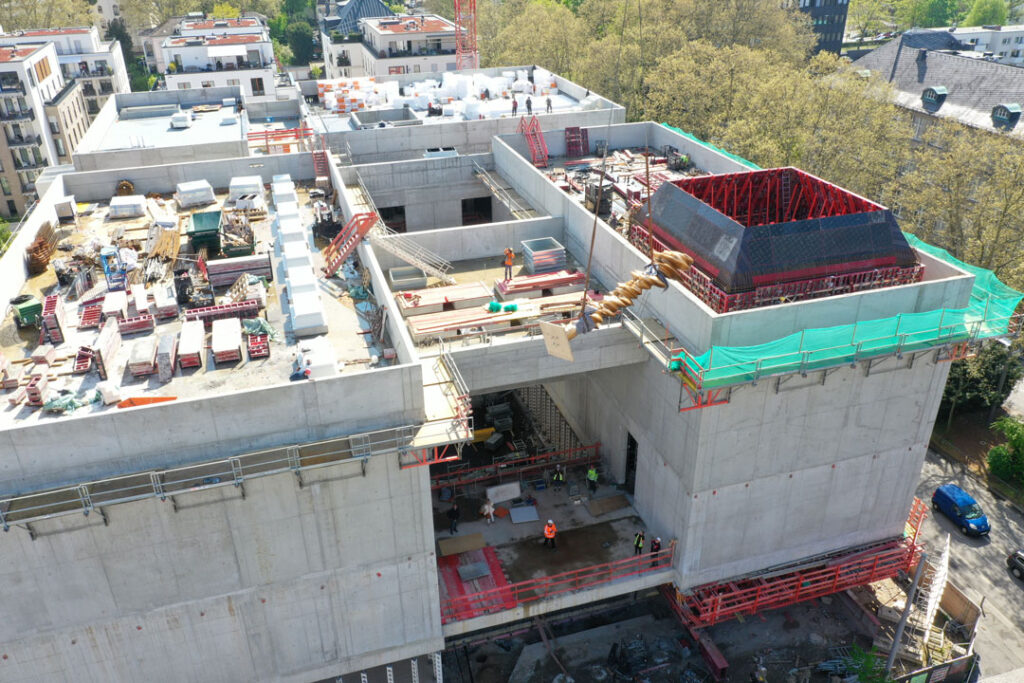
How heavy is the work of art?
The double sculpture weighs around six tons. Because it was created after the museum building had already been planned, new structural analysis calculations had to be made. To prevent the heavy work from imposing too heavy a load on the ceiling, the Wiesbaden-based company Huhle produced a special structure in which steel girders arched upwards to ensure that the bronze bodies attached to them do not transfer their weight to the ceiling but to the walls in the room.

What is the sculpture supposed to represent?
As an abstract work of art, Pair does not purport to have any effect; it only unfolds in the minds of its viewers. The dynamic shapes are detached from geometric specifications and appear organic – like round discs stacked on top of each other. What they show or are supposed to trigger mentally remains open-ended.
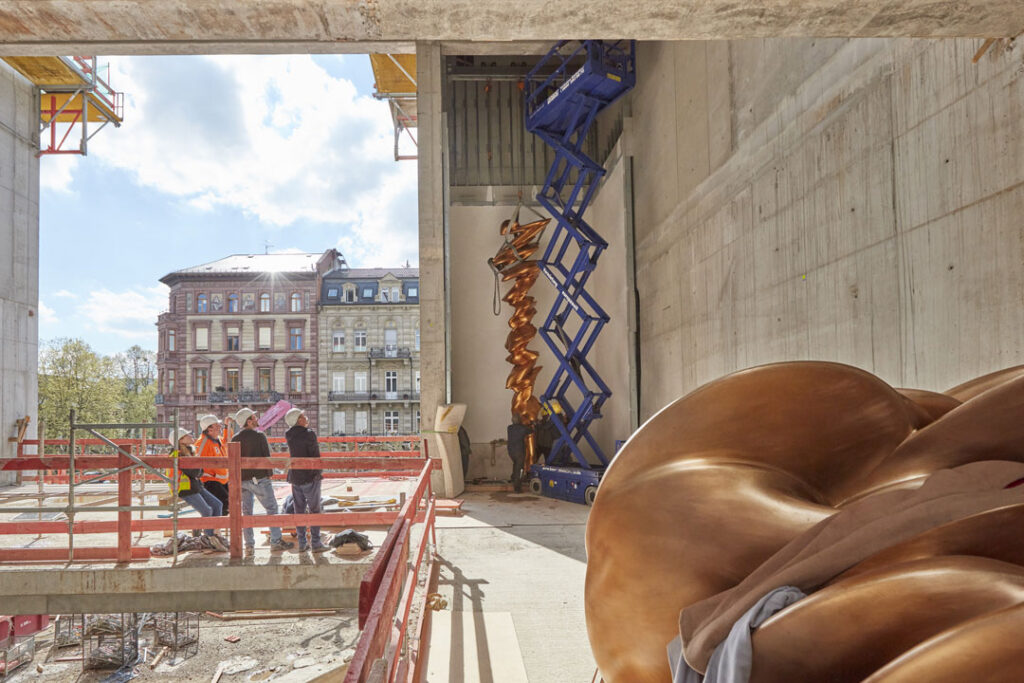
Who is Tony Cragg?
Sir Tony Cragg, born Anthony Cragg in Liverpool in 1949, is a visual artist, who has already appeared at numerous major exhibitions – such as Documenta 7 and 8 in Kassel as well as at five biennials in Venice, São Paulo and Sydney. Cragg studied art at the Gloucestershire College of Art, the Wimbledon School of Art and the Royal College of Art in London. During his studies he switched his interest from painting to sculpture. After completing his studies, he accepted a teaching position at the École des Beaux-Arts in Metz. During this period, Cragg also moved to Wuppertal, where he still lives today. From 1979 to 2013 Tony Cragg taught at the Art Academy in Düsseldorf, and in 2009 he succeeded Markus Lüpertz as its rector. He has been a member of the Royal Academy of Arts in London since 1994 and a member of the Academy of Arts in Berlin since 2002. He was also elevated to Commander of the British Empire (CBE) the same year. In 2016 he received his Knight Bachelor title, and has been Sir Tony Cragg since then.
In 2006 the sculptor acquired an overgrown 15-hectare park in Wuppertal along with the listed Villa Waldfrieden, where he sought to develop the Waldfrieden Sculpture Park. In order to devote himself to this project, he gave up his professorship at the University of the Arts in Berlin (UdK) and switched to the Düsseldorf Art Academy. The sculpture park was opened in September 2008. It displays works by Tony Cragg and other international sculptors as well as alternating special exhibitions.
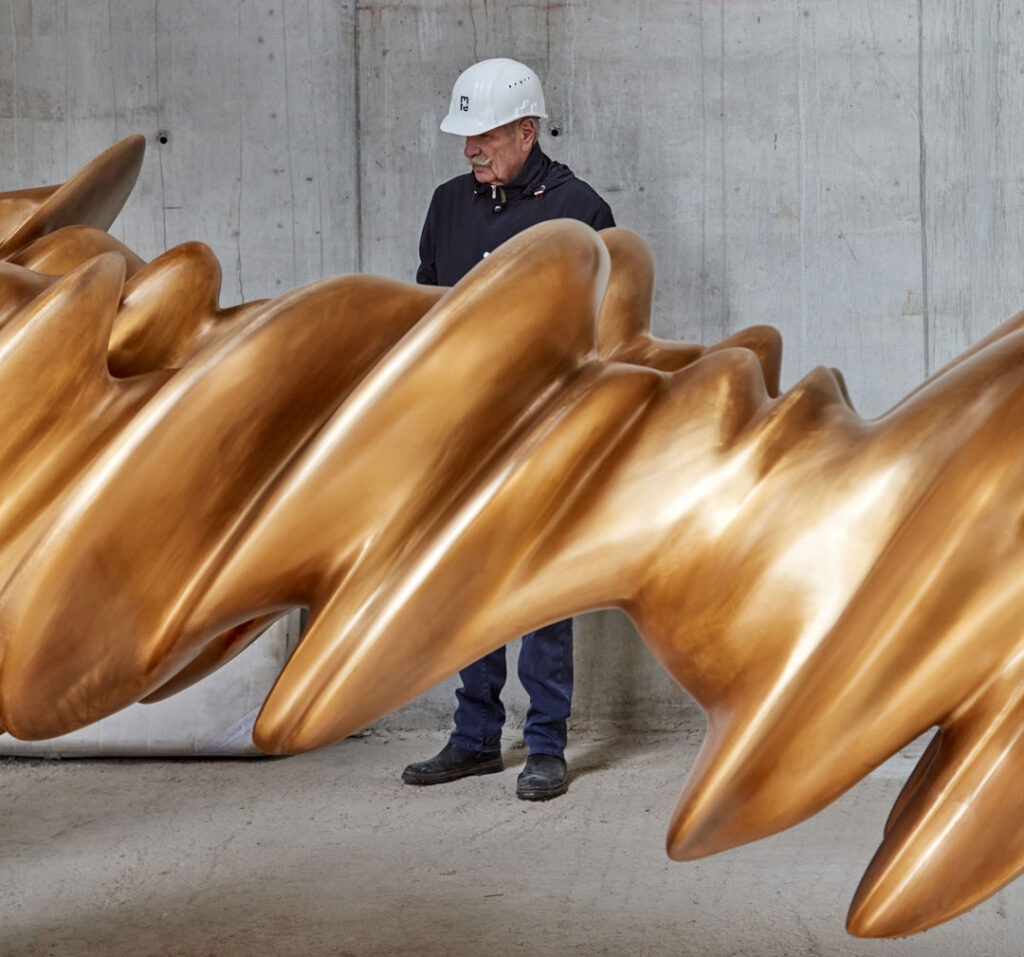
How did it happen that this work came to Wiesbaden?
Tony Cragg is considered a major international artist of abstract sculptures and has been on the wish list of collector Reinhard Ernst for a long time. Ernst acquired the wooden sculpture Willow II at an auction of Ketterer Kunst GmbH two years ago. Markus Eisenbeis from the van Ham auction house, with whom the collector discussed this work, established the initial personal contact between the artist and Reinhard Ernst. The museum founder came up with the idea of using an alcove in the Wiesbaden building that extends over two floors and is the focus of many perspectives to install a sculpture. During visits that Reinhard Ernst made with his wife to the artist’s studio in Düsseldorf, this idea grew – and culminated in sketches that Tony Cragg created for the space. The designs were immediately well received and were turned into bronze sculptures in just under two years. On 7 May, a lorry delivered Pair directly from the Kayser art foundry in Düsseldorf to Wiesbaden. Because it had rained the night before and it would be detrimental to wrap the sculptured parts with a wet surface, they floated unwrapped and in glistening gold through Wiesbaden’s sky to the surprise of all the spectators present.
You can find out more about Tony Cragg and his work on the sculpture in this (German) video from 2020:
You are currently viewing a placeholder content from YouTube. To access the actual content, click the button below. Please note that doing so will share data with third-party providers.
Photos: Marburger u. Helbig